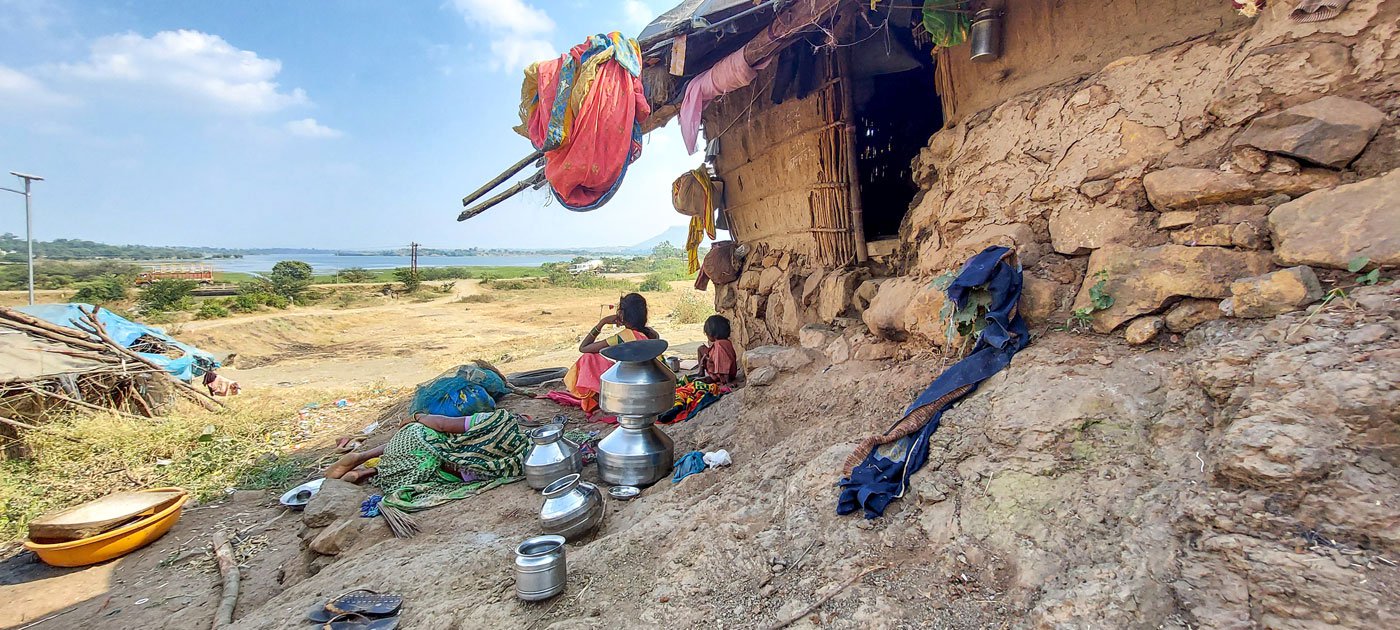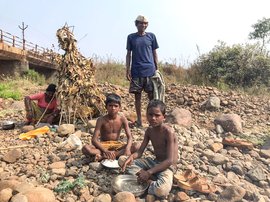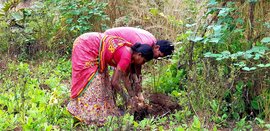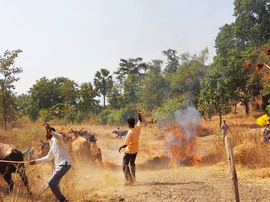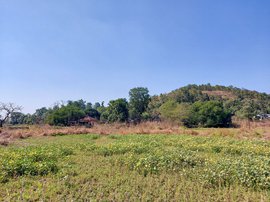Paaru was only seven years old when her father sent her away in 2019 from their home in Nashik district, Maharashtra, to work as a sheep grazer.
Three years later, in late August 2022, her parents found her outside their hut. She was left there unconscious, and wrapped in a blanket. There were strangulation marks on her neck.
"She did not utter a word until her last breath. We tried asking her what had happened, but she could not speak," said Paaru's mother, Savitabai, wiping her tears. “We thought someone had done black magic on her. So we took her to a temple on Mora hills nearby [off the Mumbai-Nashik highway]. The priest applied angara [holy ash]. We waited to see if she would gain consciousness, but she didn’t,” Savitabai remembered. Five days after she was found, on September 2, 2022, Paaru died from her injuries at the Civil Hospital in Nashik city.
Paaru had visited her family only once in the three years that she was away. She was brought home a year and a half ago by the same middleman who had taken her away to work. "She lived with us for seven to eight days. After the eighth day, he came and took her away again,” Savitabai said in the police complaint she
filed against the middleman the day after Paaru was found unconscious.
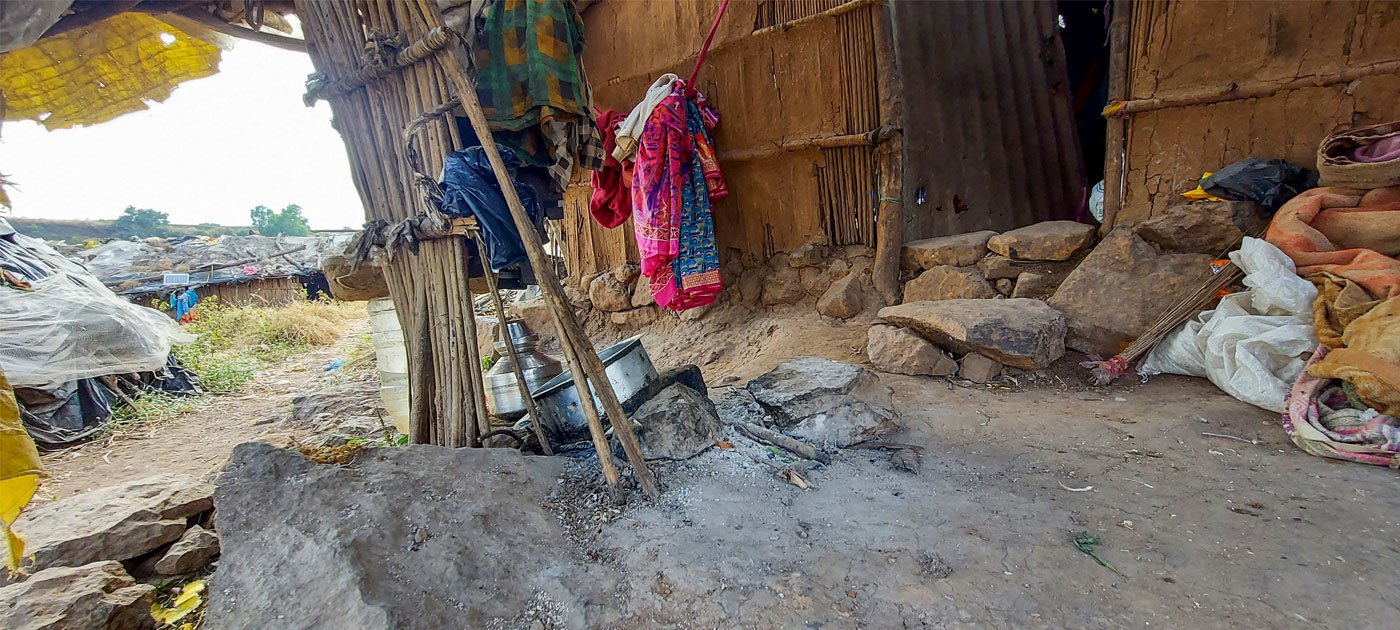
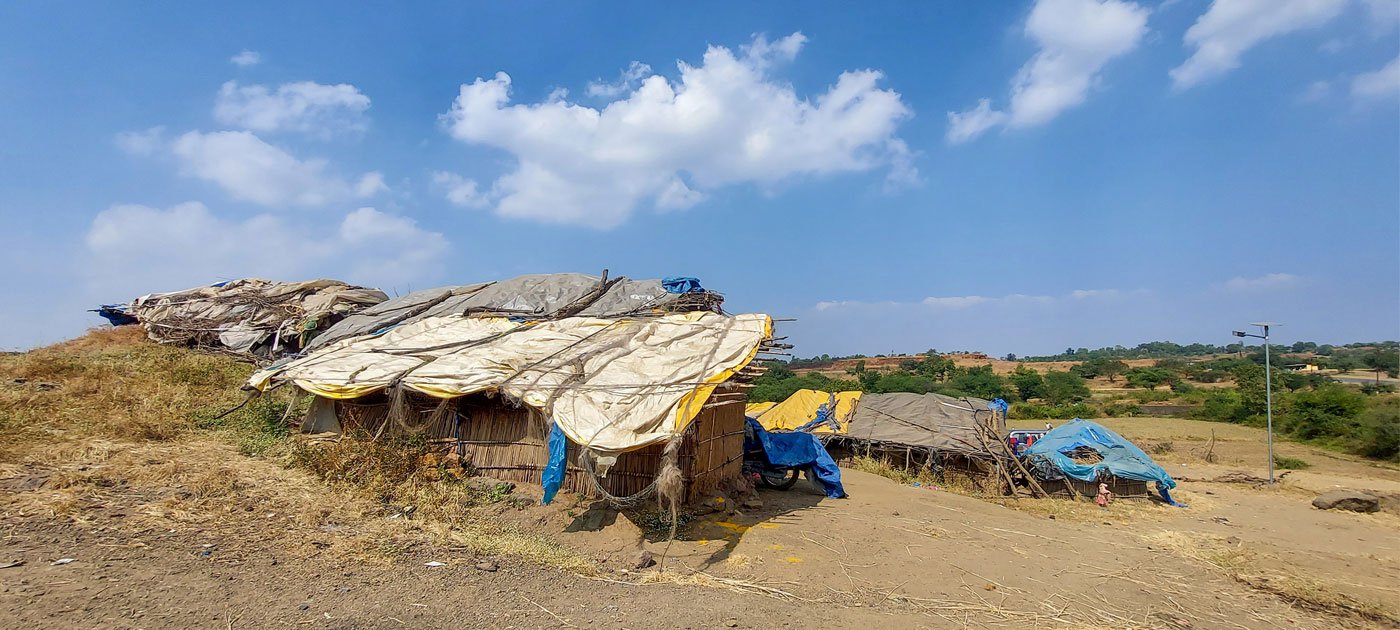
Left: The late Paaru's home now lies vacant; her family has migrated, looking for work. Right: Homes of the Katkari community near the highway
A case of attempt to murder was registered against that man at the Ghoti police station in Nashik district. “He was charged with murder later, arrested, and then let out on bail,” says Sanjay Shinde, district president, Nashik, of the Shramajeevi Sanghatana, an organisation that helps release bonded labourers. In September, a complaint was registered under the
Bonded Labour System (Abolition) Act, 1976
against four shepherds from Ahmadnagar (the same district where Paaru had been grazing sheep).
Savitabai remembered the day that the middleman had come to their hamlet – a settlement of Katkari Adivasis located off the Mumbai-Nashik highway. “He got my husband drunk, paid him 3,000 rupees, and took Paaru away,” she said.
“At an age when she should have started writing with a pencil, she had to walk long distances in barren grounds, under the harsh sun. She worked in bondage as a child labourer for three years,” Savitabai said.
Paaru's brother, Mohan was also sent away when he was seven. His father had taken Rs. 3,000 for him too. About 10 years old now, Mohan narrated his experience working with the shepherd who employed him. “I used to take sheep and goats to graze from one village to another. He had 50-60 sheep, 5-6 goats and other animals.” he said. Once a year, the shepherd would buy Mohan a shirt, a full pant, a half
pant, a handkerchief and footwear – and that was all. Sometimes, the
young boy would be given 5 or 10 rupees to buy something to eat. “If I didn’t work, the
sheth
[the sheep owner] used to beat me. I asked him to send me home many times. He used to say ‘I will call your
papa,’
but he never called.”
Like his sister, Mohan visited his family only once in three years. “His sheth brought him to our house and took him back the next day,” mother Savitabai said. When she saw him next, the child had forgotten their language. “He didn’t recognise us.”
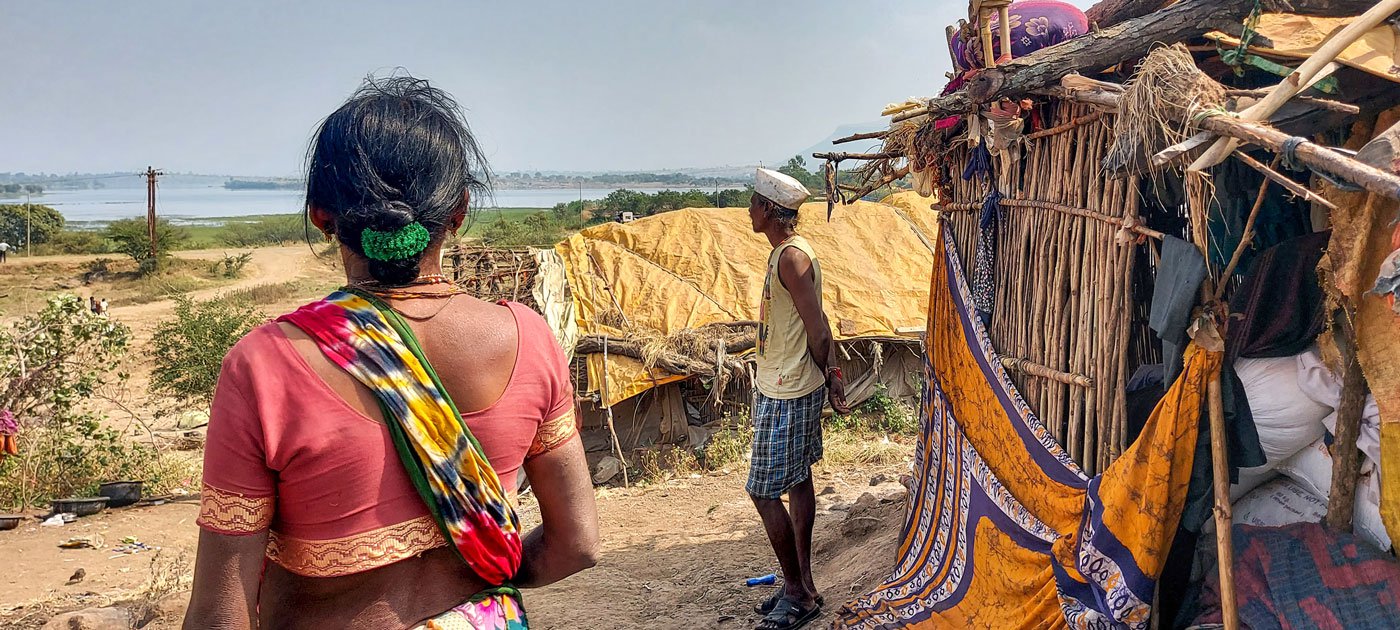
Reemabai and her husband in their hamlet located off the Mumbai-Nashik highway
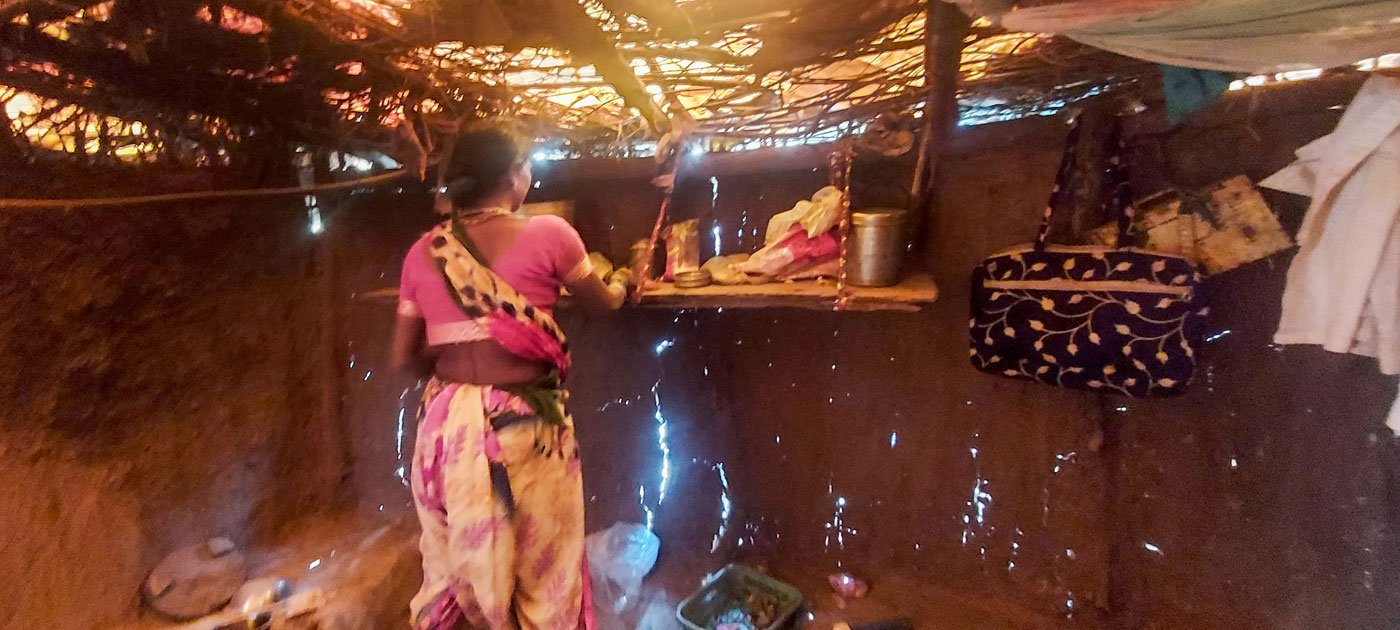
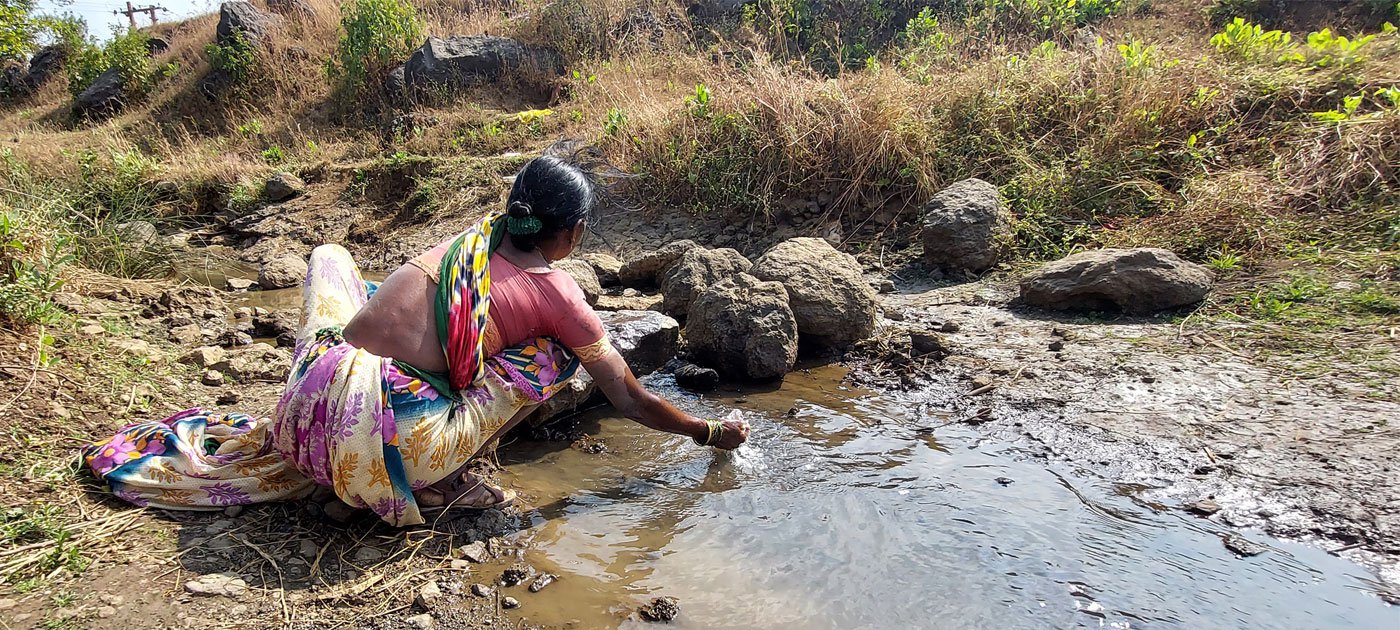
Katkari Adivasis like Reemabai usually migrate to find work in brick kilns and construction sites
“No one in my family had any work, and there was nothing to eat. So we sent the children away,” explained Reemabai, who lives in the same Katkari hamlet. Reemabai's two sons were also taken to help graze sheep. “We thought they would work and get full meals.”
A middleman picked up the children from Reemabai's home and placed them with shepherds in Parner block of Ahmadnagar district. Money changed hands on both sides – the middleman paid the parents to take away the children and the shepherds paid the middleman for bringing them these workers. In some instances, a sheep or goat would be promised too.
Reemabai's boys remained in Parner for the next three years. Besides grazing the sheep and feeding them, they fetched water from the well, washed clothes and cleaned the shed. They were allowed to go home only once.
The younger son, Eknath, said that he was beaten up if he wasn’t awake and working by 5 a.m. “The sheth used to beat me on my back and feet, and use unkind words. He kept us hungry. If the sheep we were grazing entered a field both the farmer and the [sheep] owner used to beat us up. We had to work until late night,” he told PARI. Even when a dog bit him on his left hand and leg, Eknath said he received no medical treatment and had to keep grazing animals.
Both Reemabai's and Savitabai's families belong to the Katkari Adivasi community, a Particularly Vulnerable Tribal Group in Maharashtra. They own no land and rely on labour work for income, migrating in search of work – which they usually find in brick kilns and on construction sites. Not earning enough to feed their family, many send their children to shepherds of the semi-nomadic Dhangar community, to work as sheep grazers.
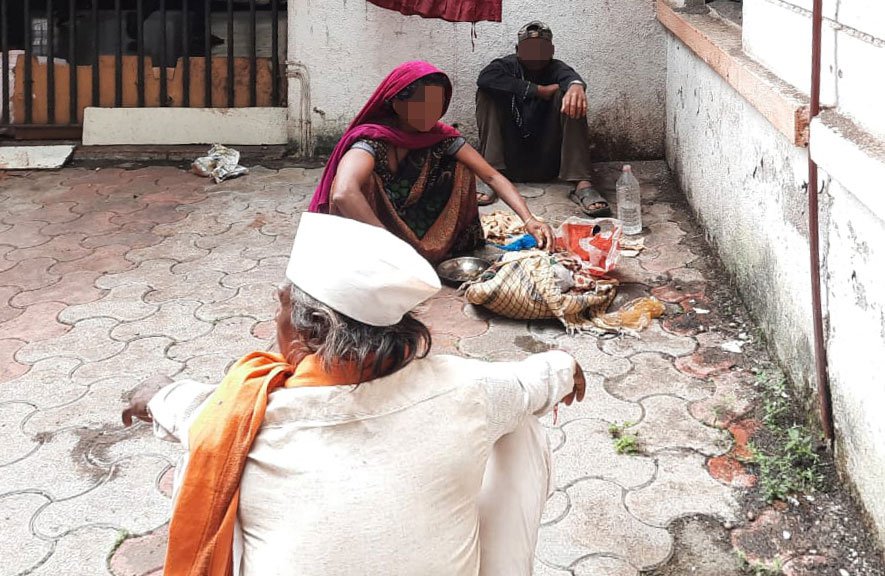
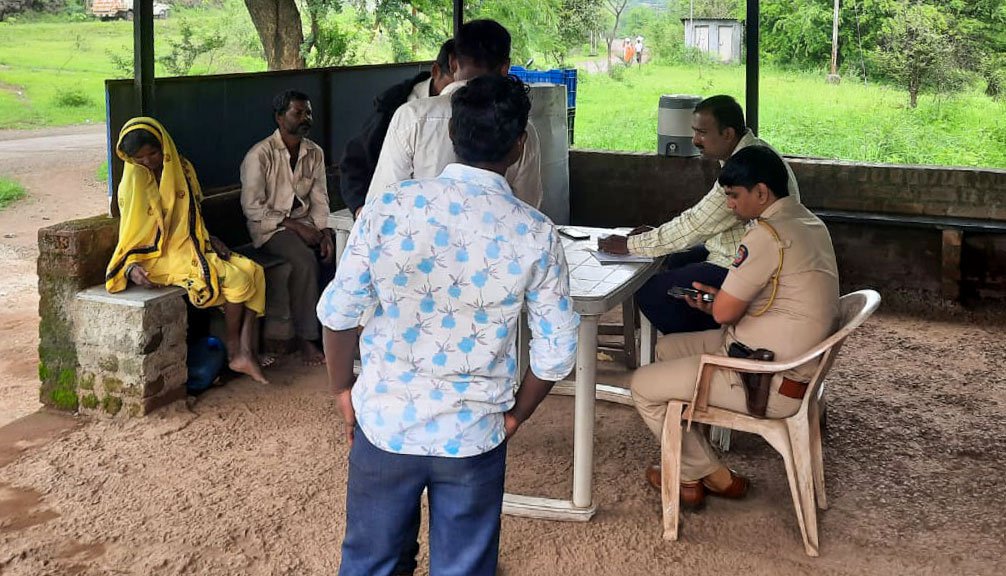
Left: Parents waiting outside the Civil Hospital, Nashik. Right: The police recording statements of the children who had been rescued from bonded labour
It was 10-year-old Paaru’s tragic death that turned the spotlight on child labour cases in the area and led to the rescue of 42 children, in September 2022, from Sangamner village of Dindori block in Nashik district, and Parner in Ahmadnagar district. The rescue was carried out by Shramajeevi Sanghatana. The children were from Igatpuri and Trimbakeshwar blocks in Nashik district, and Akola block in Ahmadnagar district. They were taken to graze sheep in exchange for some money, said Sanjay Shinde. Among them were Paaru's brother Mohan and neighbour Eknath – two of 13 children from their hamlet.
The 26 Katkari families in this hamlet, which is located near Ghoti, have been living there since the last 30 years. Their huts are built on private land. They have grass or plastic-sheet roofs, and two or more families share a hut. Savitabai's hut has no door, or electricity.
“Nearly 98 per cent of Katkari families are landless. Most of them do not have an essential document such as the proof of their caste,” says Dr. Neeraj Hatekar, a professor of Economics in Mumbai University. “Employment opportunities are scarce and so the entire family leaves home to look for labour work – in brick kilns, fisheries, collecting scrap, and other such work.”
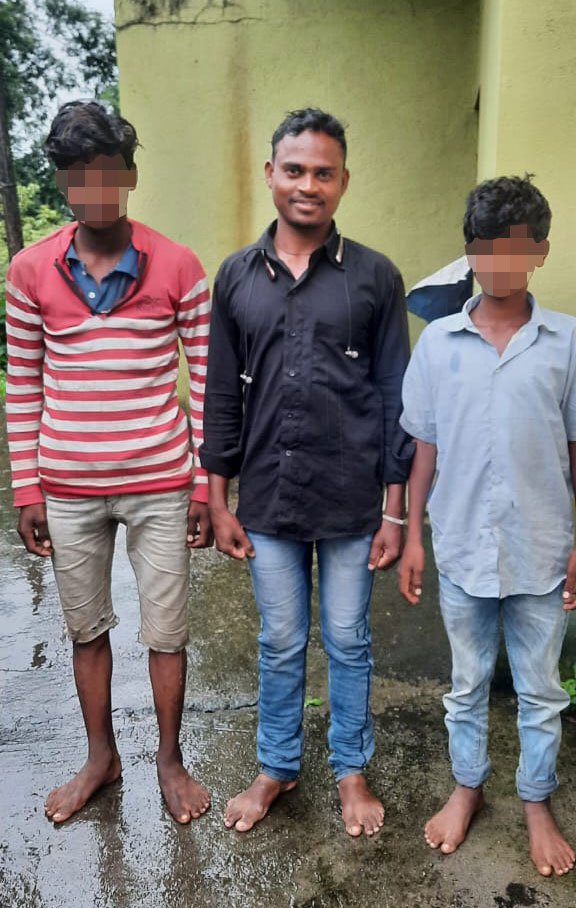
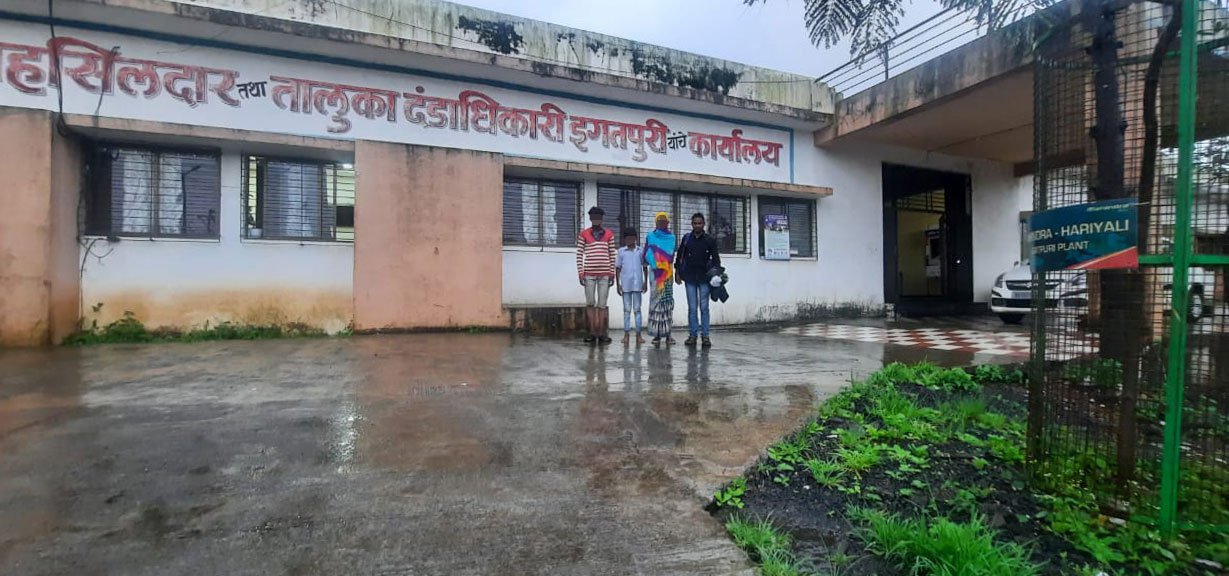
Sunil Wagh (wearing a black shirt) with the rescued children, and (right) outside Igatpuri tehsildar's office
In 2021, Dr. Hatekar led a survey supported by the union Ministry of Tribal Affairs to study the socio-economic conditions of the Katkari population in Maharashtra. The team found that only 3 per cent of those surveyed possessed a caste certificate, and many didn't have an Aadhaar card or ration card. “The Katkaris should be able to get the benefit of [government] housing schemes. The government should start employment generation work in the areas where they live,” says Hatekar.
*****
Now that her sons are back, Reemabai wants them to attend school. “We never had a ration card till now. We just do not understand those things. But these boys are educated. They got us one,” she says, pointing towards Sunil Wagh, district secretary of Shramajeevi Sanghatana, who was part of the team that rescued the children. Sunil, who belongs to the Katkari community, is keen to help his people.
“I have to offer food in remembrance of Paaru...I will have to cook,” said Savitabai when I met her the day after Paaru's death. She was building a wood fire near her hut in a makeshift stove made with stones. She put two handfuls of rice in a vessel – a morsel for her deceased daughter and the rest for her three other children and husband. There was only rice in the house. She was hoping that her husband, who earns Rs. 200 a day working in others' farms, would bring something for them to eat with the cooked rice.
The names of the children and their parents have been changed to protect their privacy.
